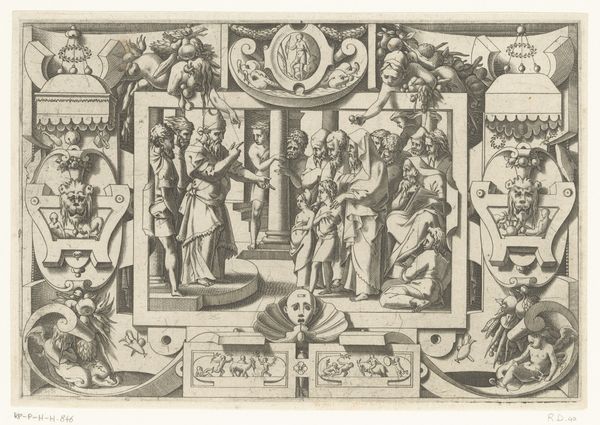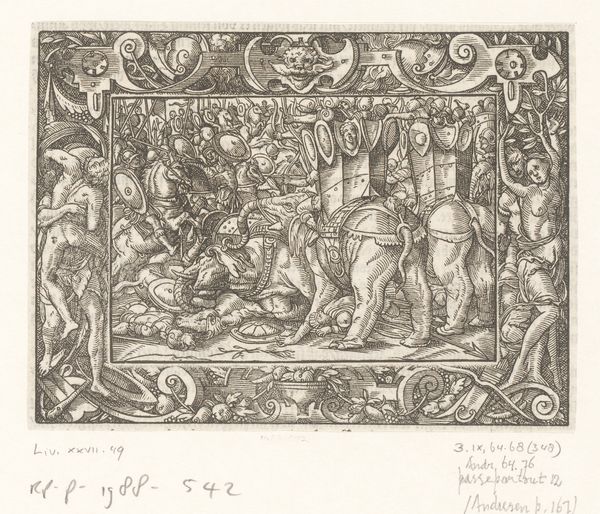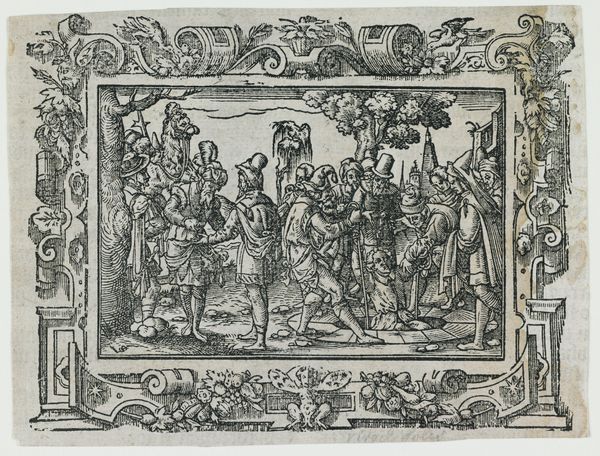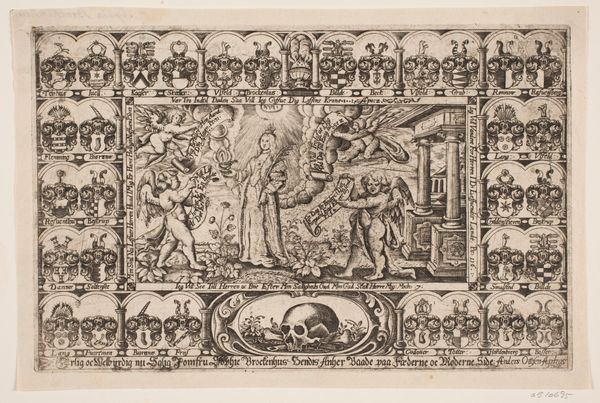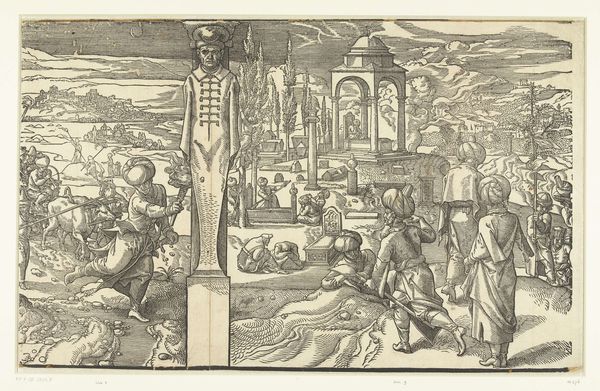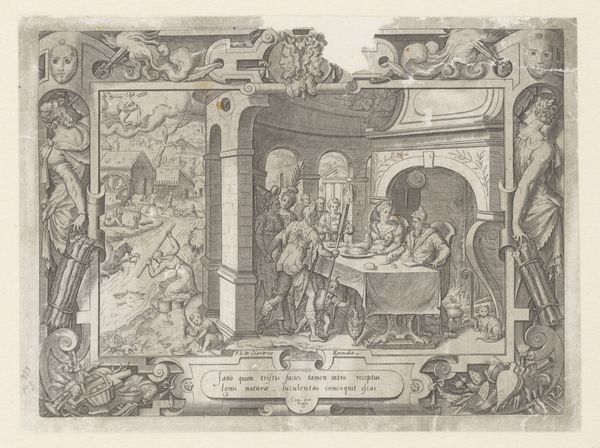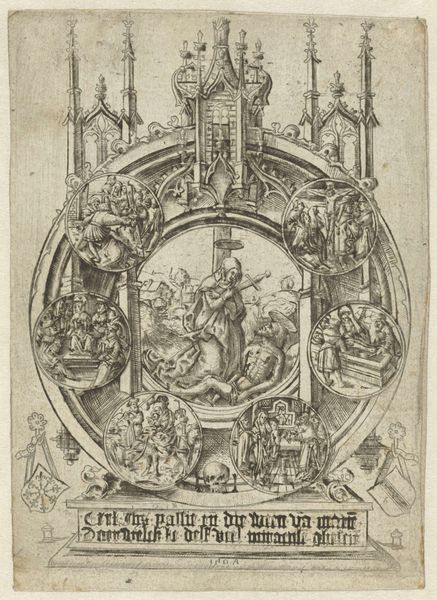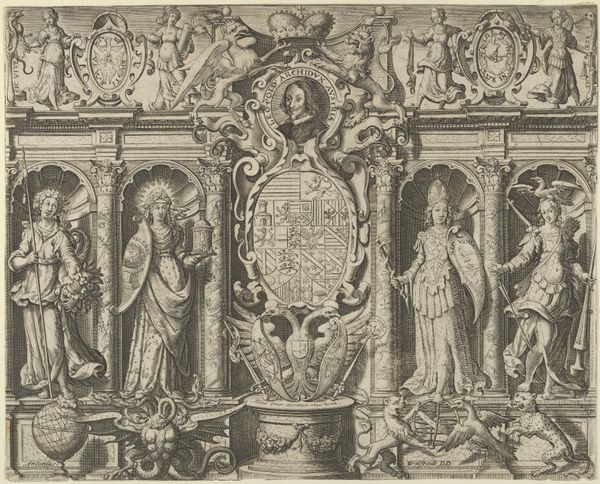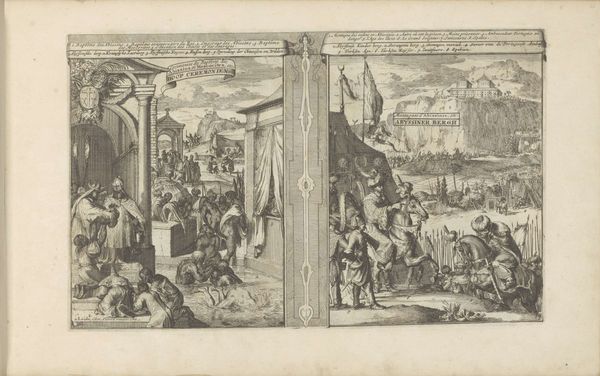
print, engraving
#
narrative-art
# print
#
pen sketch
#
figuration
#
ink drawing experimentation
#
genre-painting
#
northern-renaissance
#
engraving
Dimensions: height 217 mm, width 153 mm
Copyright: Rijks Museum: Open Domain
Editor: This is "Blazoen van Het Mariacransken," an engraving from 1561 or 1562, held at the Rijksmuseum. The scene feels incredibly dense, almost dreamlike in its juxtaposition of images, with figures that seem both classical and demonic. What do you see in this piece? Curator: I see a complex tapestry of symbols that reflect the anxieties and cultural memory of the Northern Renaissance. Note the division into earthly and divine realms; it's a potent visual metaphor. The scene to the left presents figures in earthly garb alongside horned, almost theatrical demons, possibly signifying moral corruption within the worldly sphere. The other side evokes a maritime mythology, perhaps Neptune, with figures above in celestial grace. Consider this dichotomy of visual codes. What effect do you think it has on the viewer? Editor: I think the strong contrast does create tension. It's like two different worlds colliding or commenting on each other. The heavenly grace makes the earthly corruption all the more striking. Is there any specific religious or cultural context that may explain its symbolism? Curator: Absolutely. The image appears to be a complex morality play, a visual sermon intended to be 'read' by an audience steeped in religious imagery. Note the posture and expression of the foregrounded man among demons on the left – he might signify leadership astray. The Mariacransken was possibly a Marian society, and this image, full of allegorical representations, may refer to dangers, and triumphs, faced by it in a time of growing societal turmoil. The inclusion of pagan symbology alongside Christian ones also might show an urge to find order across distinct traditions. Editor: That’s really interesting. The layered symbolism makes it much more than just a pretty picture; it becomes a real historical and cultural artifact. I guess seeing through an iconographical lens is a key skill. Curator: Indeed. Understanding those layered meanings unlocks not just the image but the very soul of the culture that created it. Symbols endure, reshape, and carry cultural memory forward, it's our task to see how these visual signs take us to new insights about human psyche, social history, or artistic creations across eras.
Comments
No comments
Be the first to comment and join the conversation on the ultimate creative platform.

